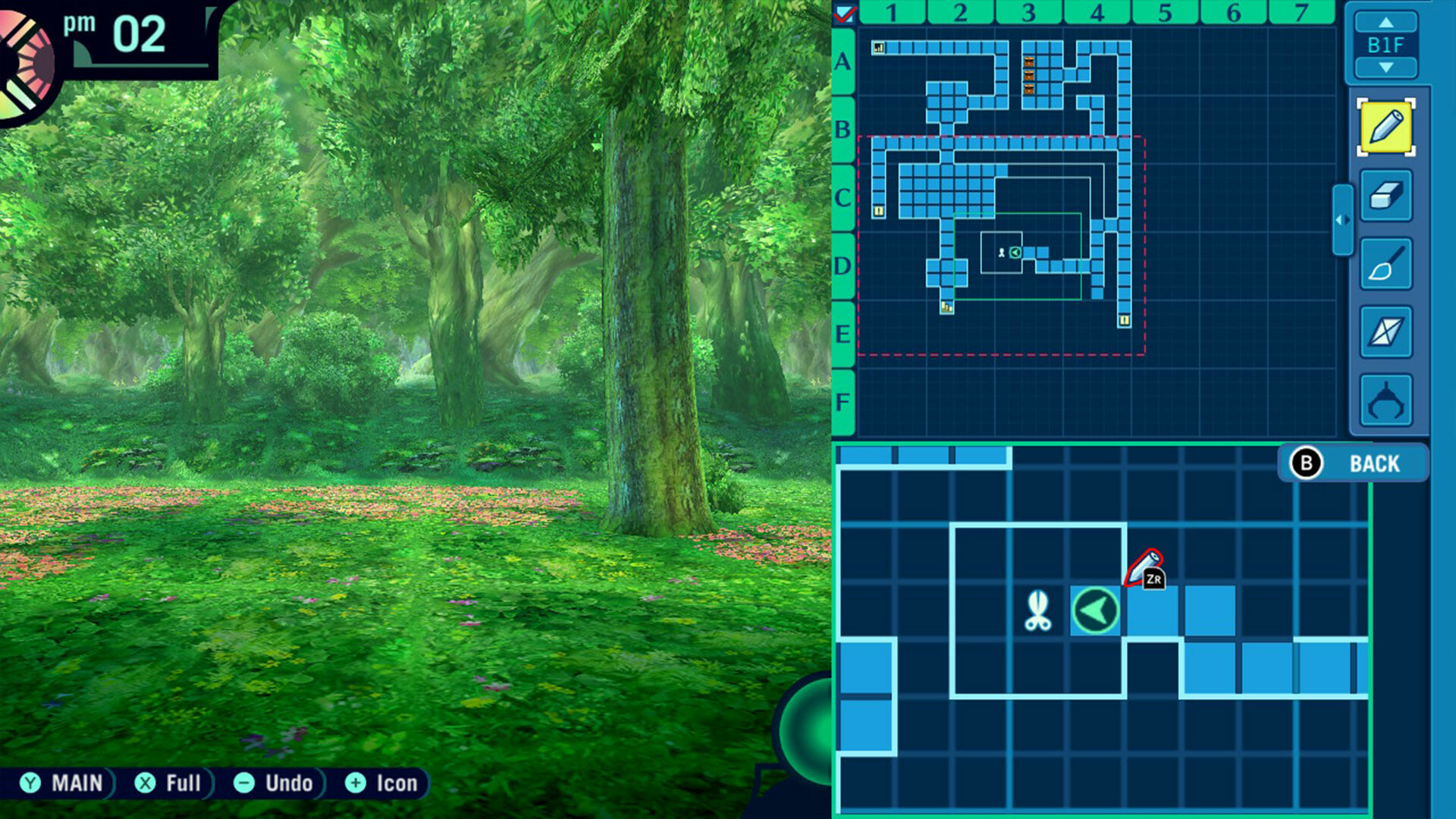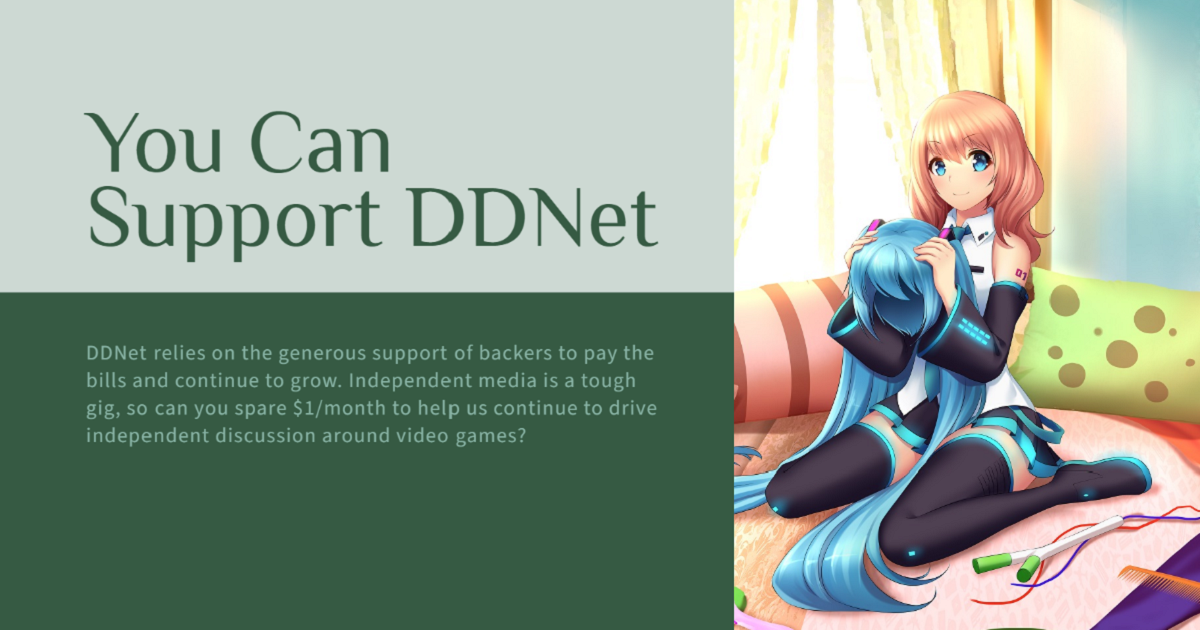The original Etrian Odyssey, released in 2007, was something of a lifeline for the dungeon crawler genre. At least as far as consoles were concerned. After the NES and SNES enjoyed robust support from the genre, things dropped away significantly, and while there were still PC titles produced, it seemed that the once mighty approach to RPGs, frontlined by the likes of Wizardry and Might & Magic, was on the wane.
Etrian Odyssey turned that around almost singlehandedly, and it did so by using the DS’ unique dual-screen hardware to take the genre back to its roots. What did people like about the dungeon crawler? Well, in the early days, a major part of it was that there was no in-game mapping tool. Yes, the genre was genuinely loved for lacking a feature. The labyrinth designs were quite complex, and the first-person perspective could be disorienting. You needed a map, so players would buy grid paper books and carefully draw out maps as they journeyed. What was a flaw in game design became a defining quality of the genre.
It was appealing because mapping was also a big part of the early Dungeons & Dragons experience. And so early dungeon crawlers gave players a fix of tabletop gaming for when their friends weren’t around. Many early-era RPG fans still have those booklets buried in boxes at home. I know I do somewhere.
It was that quality and experience that Etrian Odyssey so successfully tapped into, simply by implementing the ability to draw a map on the DS’ touch screen as you explored. The success of that concept launched the series and revitalised the entire dungeon crawler for consoles. Now we get a lot of them. The genre’s never been healthier, and Atlus wanted a piece of the pie, hence these HD remasters for the Switch and PC.
Fans have been waiting for this series to move into the world of single-screen gaming. However, as much as I love Etrian Odyssey I have remained firmly on the sceptical side. I’m pretty sure I’ve mentioned this several times on the podcast, and on Twitter, and basically to everyone that will listen to me: I did not think the dual-screen experience on the DS and 3DS could be effectively ported to a single-screen console. Especially on a console where the touch screen is not driven by a stylus, as with the DS and 3DS. I did not think that the mapping function would work anywhere near as effectively, and sans an enjoyable and functional mapping system, I thought that Etrian Odyssey would be greatly diminished.
Unfortunately, I was right about that. Mapping in these remakes is nowhere near as pleasurable on the Switch as it was on the dual-screen handhelds. When you play the Switch in handheld mode, you can use the touch screen, but sketching out neat lines and colouring in the spaces is far less precise when you’re poking at it with a finger, compared to pencilling it in with a stylus. Meanwhile, button controls (for when you’re playing docked) are held back by an almost shockingly clumsy, cumbersome UI.
Most frustrating of all, however, is that in both cases, the Switch screen is split in half. The left side of the screen is used for the first-person window into the world, and the right-hand side of the screen displays the map. Aesthetically this is so much less pleasing to the eyes than the stacked approach on the DS and 3DS. Atlus knows this, too. When you drop into a battle or the menu screen – those places where you don’t need a map – the screen reverts to a full-screen view of the action. The split-screen approach is, apparently, the best solution the team could come up with for an impossible problem. Sadly, it’s just not good enough. Etrian Odyssey HD and its two sequels are, unfortunately, diminished.
In the end, I found the best solution was heresy; auto-mapping and full screen. When you select those options, the map itself reverts to a small box in the top corner, and Etrian Odyssey basically plays out like a standard dungeon crawler. You can still pull up the full map on the rare occasion that you need to drop in a specific note. However, for the most part, you won’t need to worry about mapping then, and therefore the best version of this particular adventure is to remove what was, originally, the series’ finest quality.
With all of that said, Etrian Odyssey is still Etrian Odyssey, and even diminished as it is, it still stands heads and shoulders above most in the genre. One thing that has been updated for this trilogy is the aesthetics. From enemy sprites to the environments, this game is gorgeous when blown up to the big screen experience. The denizens of the various labyrinths you explore are vibrant and creative. The world itself really sells the “deadly serenity” atmosphere that was always so subtle and yet appealing in this series. And those angry FOE balls are more intimidating than ever as you creep around them.
To this day, Etrian Odyssey’s FOEs are the greatest innovation the series has brought to the genre. Where the mapping was an explicitly traditional throwback to the very origins of the genre, through the FOEs Atlus provided a new way of looking at the act of dungeon crawling itself. For those that have never played this series, FOEs are incredibly powerful monsters that roam the various dungeon levels. The first time you encounter them, they’re going to be vastly more powerful than your party can handle. So you need to figure out a way to progress through the dungeon while avoiding them instead. That’s not always easy to do. The angry balls of energy that represent them in the dungeon environments move in a turn-based fashion as you do, but if they “see” you they’ll pursue you, and if you get pulled into a random encounter with regular enemies, it’s entirely possible that the FOE will catch up and come crashing into you. Game over.
You quickly learn to appreciate and fear the strength of these entities. But you’ll get your revenge. After exploring several levels more of the dungeon, you’ll have levelled up to the point that you can return to those earlier FOEs and finally square off against them. The satisfaction of subsequently defeating them is incredible. These are far more interesting than any boss battle in a conventional JRPG, thanks to the extended interaction that you have with them over the course of the game. Other games have since emulated this idea – the Mary Skelter series perhaps most effectively – but none have quite managed to top just how well the system works in Etrian Odyssey.
In other areas, the Etrian Odyssey HD trilogy remains the same experience that it was back in the day. The character development systems are fairly streamlined, with each class having a fairly straightforward skill tree. This is complicated because every character class has a real role in the dungeon, but you’re limited with how many can be in the party at any one time. As a result, you’ll find yourself regularly returning to town to swap around characters, and the party-balancing side of Etrian Odyssey remains nuanced and compelling. The narratives of all three titles are relatively thin, and some existing fans might bristle that the added narratives brought to remakes of the first two from a few years ago did not form the basis of this new remake. However, frankly speaking, those narratives were nothing exceptional and nothing was actually lost by not wasting development resources on bringing them to this version. Etrian Odyssey’s narrative experience is effective as an emergent one about carefully picking your way through intricate and artfully designed maps while tussling with the FOEs. You don’t need cutscenes and dialogue to have memorable adventures with these.
I’m torn on these remakes. On the one hand, I don’t think they work on Switch. Not in recreating the original vision of Etrian Odyssey, at any rate. The best way to play these is to jettison the mapping feature that was so core to the experience on the DS and 3DS. This truly is disappointing. On the other hand, even as a stock-standard set of dungeon crawlers, the three Etrian Odyssey titles bundled up here are beautifully elegant, ethereal, and artful. They’re challenging and fundamentally enjoyable, classic dungeon crawlers. If these new releases help a new legion of people discover Atlus’ dungeon-crawling genius for the first time, then I’m ultimately very glad they exist.















